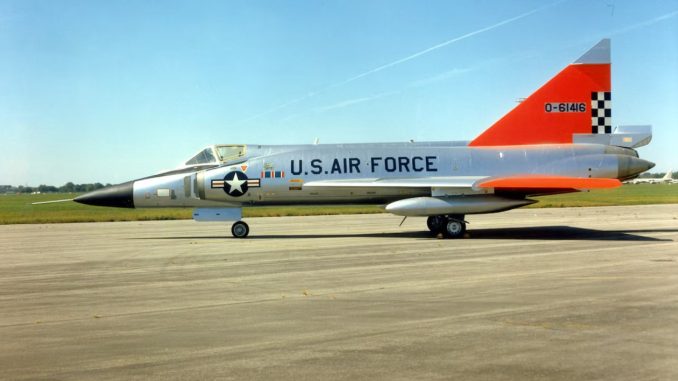
On this day, 71 years ago, in 1953, the Convair F-102 Delta Dagger took its first flight and became an inseparable part of the U.S. Air Force as an interceptor aircraft. The F-102 was designed and produced by Convair, an American aircraft manufacturer and member of the Century Series. The aircraft was designed during the Cold War to oppose Soviet Strategic bombers like Tupolev Tu-95. The “Delta Dagger” not only solidified the USAF with a strong defence but also became the first operational delta-wing fighter operated by the U.S. The F-102 did not stop at a national achievement but became a global sensation by being the world’s first supersonic, all-weather jet interceptor. Its remarkable performance and aid during the war earned the aircraft the title of “The 1954 Ultimate Interceptor.”
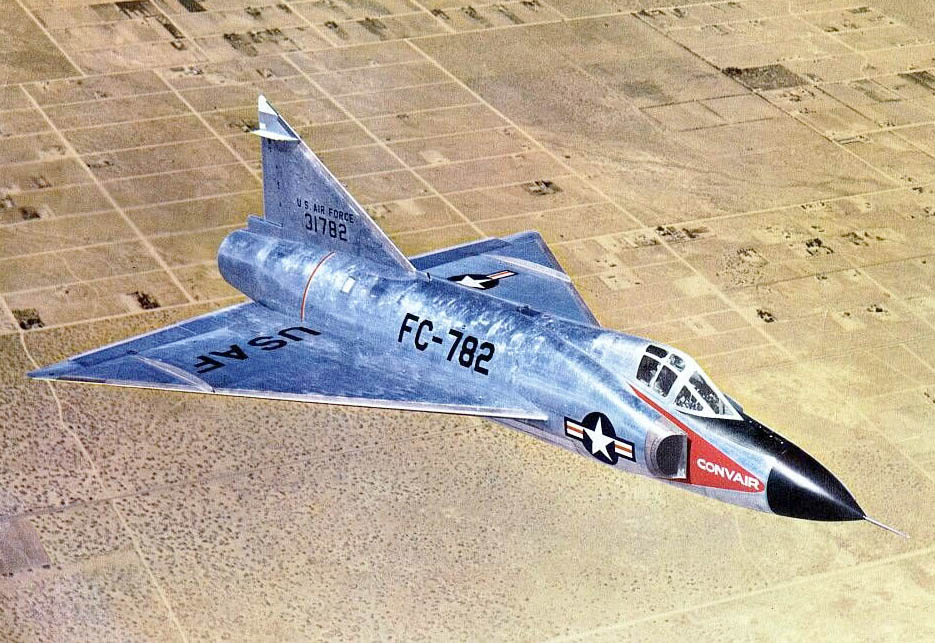
The Dagger Design
The development of the F-102 began under Convair after the USAF selected it among other competing manufacturers like Lockheed and Republic. After their successful victory, Convair began working on the aircraft design by November 1951, and the YF-102 prototype was manufactured. The YF-102 took its first flight on October 24, 1953, from Edwards Air Force Base with Convair’s chief test pilot, Richard L. Johnson. The prototype, unfortunately, had a short career as only nine days after its first flight; it faced an accident while attempting to reach Mach 1. The attempt caused severe buffering of the aircraft, leading to serious injuries for Johnson. The accident highlighted certain drawbacks of the newly designed prototype, which included the excess transonic drag being higher than anticipated. The excess drag limited the aircraft to a subsonic speed of Mach 0.98, with a ceiling of 48,000 ft, which was far below the requirements of the interceptor design.
Sharpening the Dagger
After the unfortunate events with the prototype flight, Convair decided that the shortcomings needed extra modifications, and a redesign must be initiated to prevent the cancellation of the project. Convair had the brilliant idea to incorporate the recently discovered Whitcomb Area Rule by a NACA engineer, Richard Whitcomb. The rule focused on reducing the number and strength of shock waves produced during the sonic flow. In order to achieve this, an aerodynamic shape should change in cross-sectional area as smoothly as possible from front to rear. The application of this rule simplified production of the aircraft and as well as its maintenance.
Apart from the aerodynamic changes for reducing drag, the redesign also featured a fuselage 11 feet longer the previous design. The fuselage was also pinched at the midsection, creating a vase-like structure and a narrower canopy. The F-102 underwent several modifications throughout its operational career, especially the integration of infrared search and tracking systems, radar warning receivers, transponders, and improved fire control system in the airframe. Pratt & Whitney J57-P-25 turbojet engines powered the final designs with afterburners, which provided the aircraft with a maximum speed of 825 mph and Mach 1.25 with drop tanks.
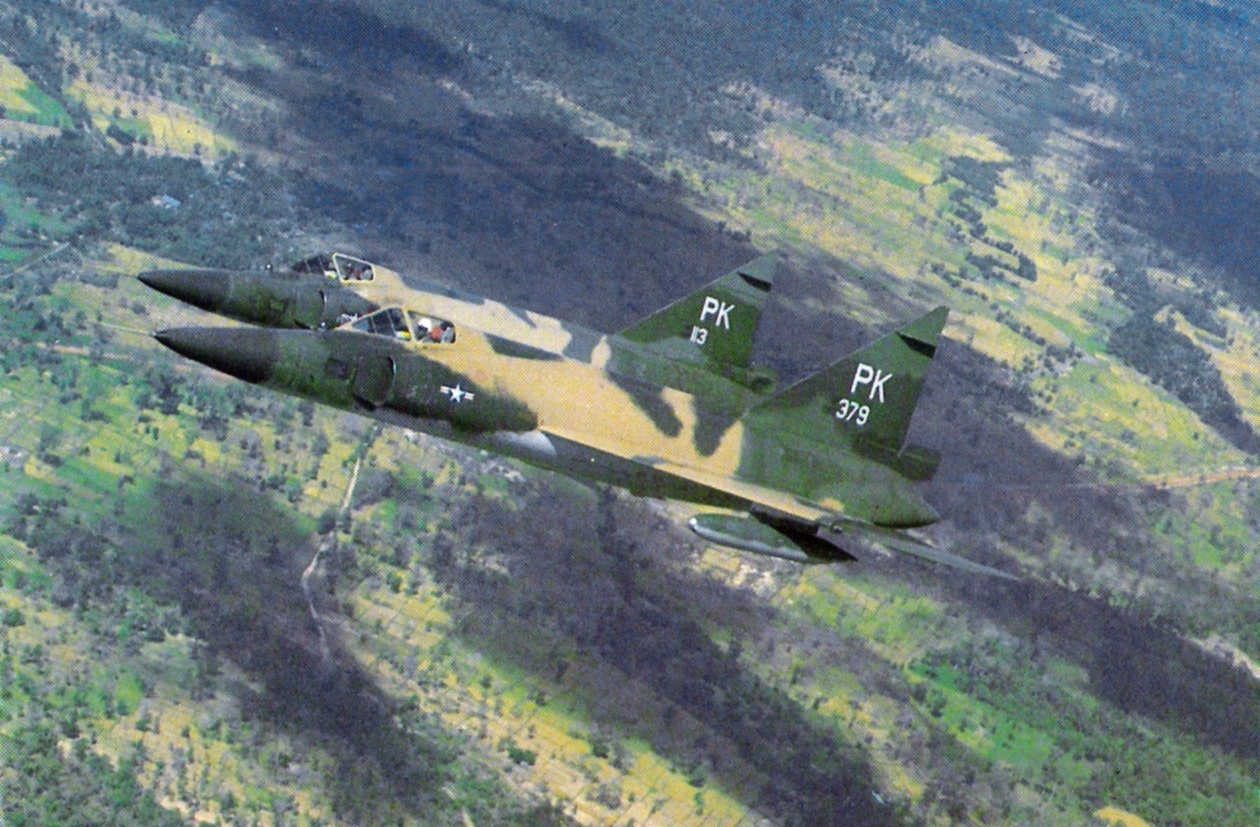
Sharp & Timeless Defense
The F-102’s operational career started in June 1956, when the 327th Fighter-Interceptor Squadron became the first unit to be equipped with F-102As. After spending its initial years of service at George Air Force Base, the aircraft continued its future operations from Thule Air Base on Greenland after the 327th was deployed. This transition of the air bases helped access the interception of Soviet aircraft at a greater distance from the U.S. The F-102 also served in the Vietnam War as a fighter patrol and as a bomber escort. However, 14 aircraft were lost during this war, with one being lost in air-to-air combat while the rest were lost to ground fire and accidents. During its operational service through the decades, the F-102 went through several enhancements, including new wing designs and aerodynamic augmentations. The aircraft continued its service for decades after its first flight in 1953 and remained a glorious bomber piercing through the skies with its unique delta wing structure.
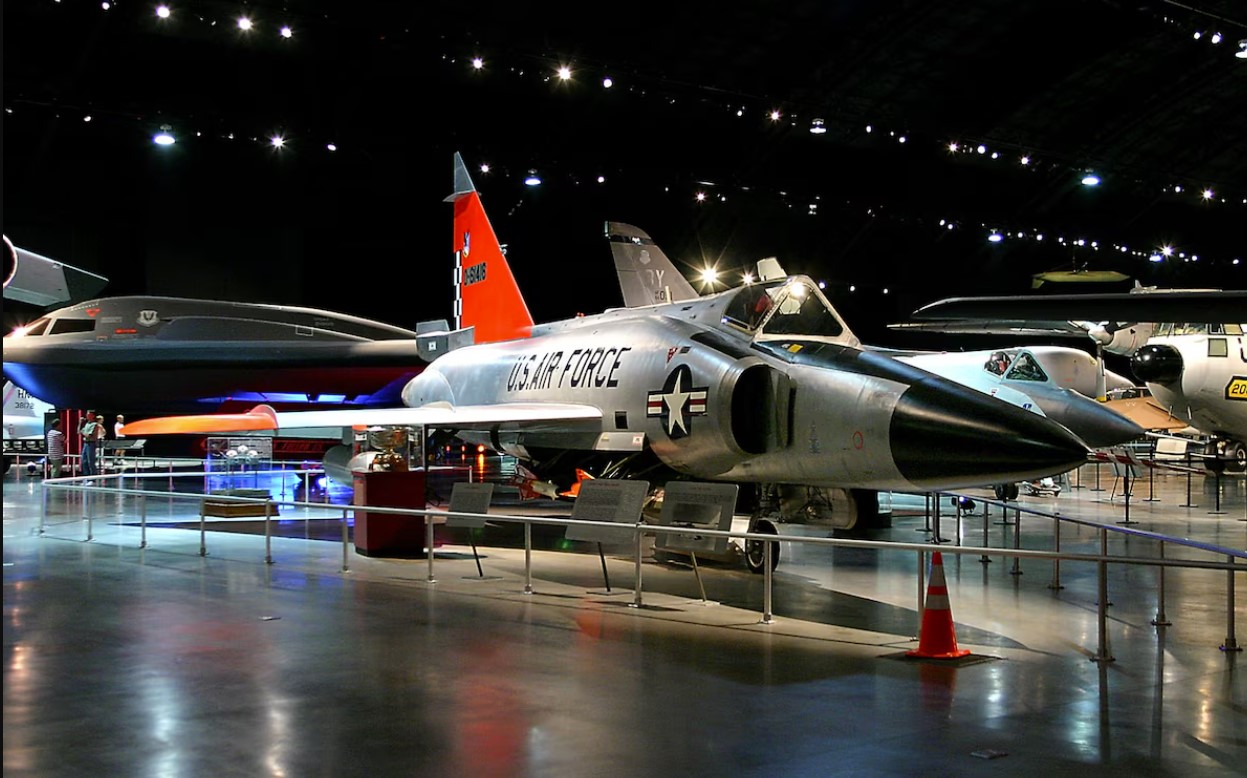
The Gate Guardian
After 20 years from its initial takeoff in 1973, six of the F-102s were converted into target drones under a project called Pave Deuce. Eventually, the project converted hundreds of F-102s into target drones. These drones were used for newer fighter aircraft and by the U.S. Army’s Patriot Missile system for testing. By 1976, the F-102 was retired from U.S. service, while the last QF-102A / PQM-102B target drone was deployed in 1986. As of 2024, none of the F-102s remain in airworthy condition; however, several can be seen at museums and as permanent static displays as gate guardians at Air Force and Air National Guard installations. Standing tall, cutting sharply across the historical tapestry.
Today in Aviation History is a series highlighting the achievements, innovations, and milestones that have shaped the skies. All the previous anniversaries are available HERE
Related Articles
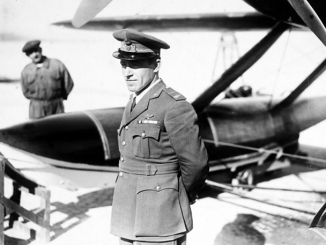
Today in Aviation History: Francesco Agello Sets a New Airspeed…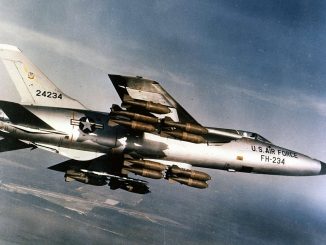
Today in Aviation History: First flight of the Republic F-105…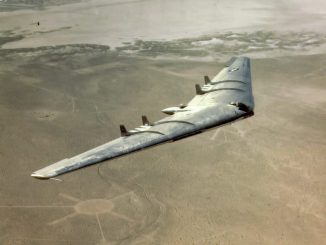
Today in Aviation History: First flight of the Northrop YB-49…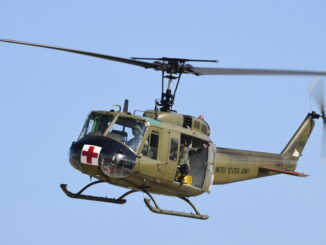
Today in Aviation History: First flight of the Bell UH-1…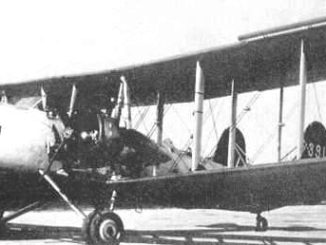
Today in Aviation History: First Flight of The Mitsubishi 3MT5
"Haritima Maurya, pen name, ""Another Stardust,"" has been passionate about writing since her school days and later began sharing her work online in 2019. She was drawn to writing because of her love for reading, being starstruck by the art of expression and how someone can make you see and feel things exclusive to their experience. She wanted to be able to do that herself and share her mind with world cause she believes while we co exist in this beautiful world least we can do is share our little worlds within.
As a commercial pilot, Haritima balances her passion for aviation with her love for storytelling. She believes that, much like flying, writing offers a perspective beyond the ordinary, offering a bridge between individual experiences and collective understanding.
Through her work, ""Another Stardust"" aims to capture the nuances of life, giving voice to moments that resonate universally. "





The Deuce was never fitted with Radar Warning Recievers, and only one Dude was lost in the Viet Nam War, not 14, because the Combat Aircraft book on the Deuce only mentions the the single example shot down by a MIG-21. Also, 825 MPH equates to MACH-1.25.